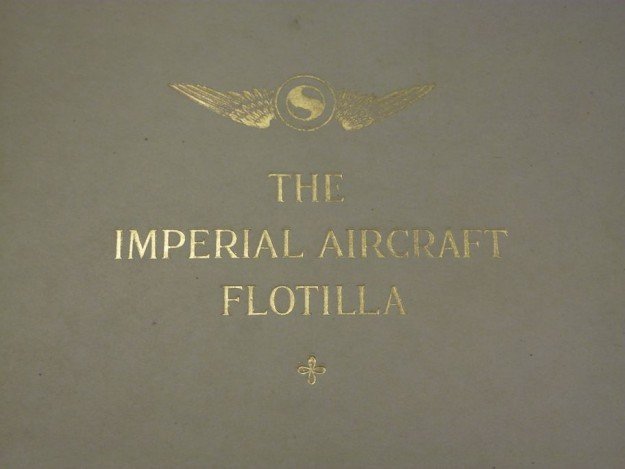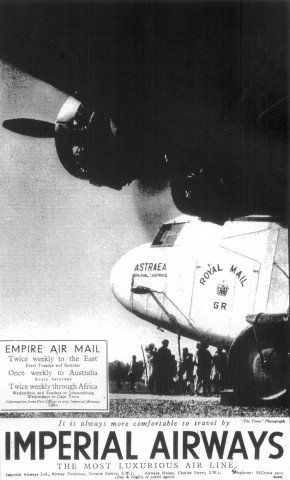
We are familiar enough with the Spitfire Funds of the Second World War, in which patriotic individuals and groups could buy aircraft for the nation. There was a fair amount of precedent for this. In the early 1930s, Lady Houston more than once offered the government hundreds of thousands of pounds for air defence, though this was turned down. Perhaps she was inspired by the Nizam of Hyderabad who in 1917 donated a whole squadron of DH.9As, forming the initial complement of No. 110 Squadron RFC. In fact the idea of civilians donating military aircraft had its origins before 1914, at a time when Britain appeared very weak in the air. Most famously there had been the sorry story of the Morning Post airship, purchased from France in 1910 with the money raised by a subscription fund, damaged on arrival when it tried to squeeze into its hangar, and destroyed on its first flight after being repaired. But the idea persisted. A proposal made by the Review of Reviews during the 1913 airship panic for 'each county, each great city or town, each collection of villages in the homeland and the Empire [to] give one or more aeroplanes to the State' came to not much, though a few months later it was reported that 'a sum of £1000 has been subscribed in British East Africa for the purchase of an aeroplane for Great Britain'.1
Something very like the Review of Reviews scheme, at least the imperial part of it, did come to fruition early in the First World War. The Imperial Aircraft Flotilla, although it was the Empire's gift to the Mother Country, was actually born in London's clubland, in January 1915:
Each section of the Empire was asked by the Over-Seas Club to present an airplane to the Royal Flying Corps, to be named after the district which contributed the money towards its purchase.
At the same time an appeal was made by the Patriotic League of Britons Over-Seas, of which H.M. The King is also Patron, to British subjects resident outside the Empire to make a joint gift to the Royal Navy.2
The motivation was 'The Vital Need for Air Supremacy' and the RFC's 'almost limitless' demand for aeroplanes.3 In meeting these challenges, the Flotilla had all the support it could want from Britain's elites. A small but fairly lavish (note the embossed cover, above) promotional book entitled The Imperial Aircraft Flotilla was published in 1916, featuring endorsements from the King (or rather from courtiers writing on his behalf) and the Queen (ditto, though in her case she had actually christened four of the Flotilla's machines before they left for France), Lord Kitchener (War Minister), Arthur Balfour (First Lord of the Admiralty), the Army Council, Major-General Henderson (commander-in-chief, RFC), and Bonar Law (Colonial Secretary). Publicity was provided by the weekly edition of The Times and the overseas edition of the Daily Mail (of which the Over-Seas Club's founder, Evelyn Wrench, had been editor). As Henderson stressed, money was wanted, rather than actual machines. For £1500, the RFC would get 'a 70 h.p. Renault, B.E., 2c' and for £2250 'a 100 h.p. Gnome, Vickers' Gun Biplane, complete with gun'.3 The Navy's aircraft were rather more expensive, with £3500 allowing the purchase of 'the latest type of short [sic] biplane'.3
How successful was all this? The stated goal was 'a full flotilla of 100 units'.3 The Admiralty had been given a cheque for £35,000 from the Patriotic League in July 1915, enough for 10 seaplanes which were (so Balfour claimed) formed into a squadron named 'Britons Over-Seas'.4 By October 1915, 34 machines had been donated to the RFC.5 As of 1 May 1916, according to The Imperial Aircraft Flotilla, 'thanks to the splendid generosity of British subjects over-seas' 68 aeroplanes had been presented to the British government for the RFC and another 26 for the RNAS.6 The 100 mark was reached in May 1917 -- though even then 'Durban and Shanghai had provided additional machines', so the total was presumably at least 102.7 The tempo must have stepped up considerably in the last months of the war, for in 1922 it was claimed that the final tally was an impressive 350, more than three times the initial target.8 The Imperial Aircraft Flotilla contains a listing, as of May 1916, of which dominions or colonies, and in some cases which organisations or individuals, donated aircraft, and I'll look at this in a following post.
![]() This work is licensed under a Creative Commons Attribution-NonCommercial-NoDerivatives 4.0 International License.
Permissions beyond the scope of this license may be available at http://airminded.org/copyright/.
This work is licensed under a Creative Commons Attribution-NonCommercial-NoDerivatives 4.0 International License.
Permissions beyond the scope of this license may be available at http://airminded.org/copyright/.
- 'Britain’s peril in the air', Review of Reviews 47 (April 1913): 134; Manchester Courier, 4 July 1913, 7. [↩]
- The Imperial Aircraft Flotilla (London: The Over-Seas Club, n.d. [1916]), 8. [↩]
- Ibid., 17. [↩] [↩] [↩] [↩]
- Ibid., 13. [↩]
- Ibid., 16. [↩]
- Ibid., 7. [↩]
- Singapore Free Press, 26 May 1917, 7. [↩]
- Daily Mail (Hull), 29 March 1922, 4. [↩]




Pingback:
The Imperial Aircraft Flotilla — II | Airminded
Pingback:
The Imperial Aircraft Flotilla — III | Airminded
Pingback:
Malaya XV | Airminded
Julia Carroll
This was before even my time and I was born in 1936. I had no idea that this had been going on and I don’t recollect my elders mentioning it. This is the first I have heard of it. It may have been common knowledge in a small elite
Brett Holman
Post authorThanks for your comment, Julia. I don't think there's any particular reason why you should have heard of this practice, being born as you were twenty years later (although as I say it was revived in the Second World War). But it was reasonably well-known during the First World War itself -- by its nature the scheme depended on publicity, as can be seen by the list of gift aircraft, some of which were subscribed by communities and groups.